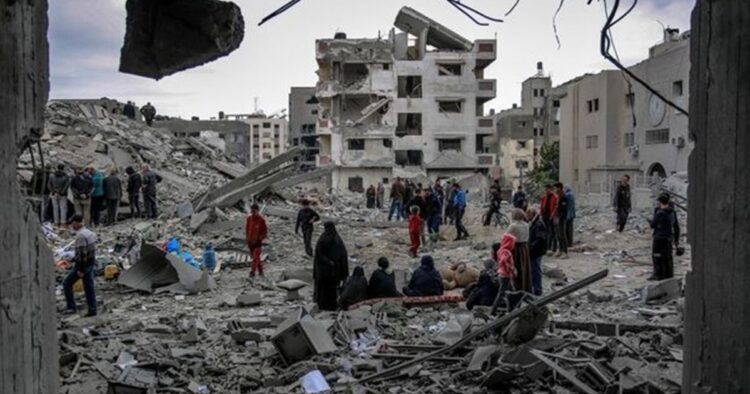A senior official from the U.S. State Department has expressed grave concerns about the possibility of famine in parts of the northern Gaza Strip. The official, speaking on condition of anonymity, highlighted the scarcity of trucks in the region, which has hindered the delivery of essential aid. Despite warnings from the United Nations about the looming famine, the official suggested that it might already be present in some areas.
The United Nations has issued warnings about the imminent famine, projecting its likelihood by May in northern Gaza, with the potential to spread throughout the entire enclave by July. However, aid distribution faces significant challenges, including security issues, lack of cooperation with Israeli authorities, and insufficient trucks and fuel, according to U.N. spokesman Stephane Dujarric.
Israeli officials have refuted claims of responsibility for aid delays, asserting that aid delivery within Gaza falls under the purview of the U.N. and humanitarian agencies. Israel has also accused Hamas of diverting aid meant for civilians.
A critical issue hindering aid distribution is the shortage of trucks within Gaza. The State Department official emphasized the need to acquire additional trucks to address the crisis. Despite existing aid delivery efforts, such as over 200 trucks managed by the U.N., the official stressed the necessity for more extensive assistance to meet the growing demand.
Efforts are underway to increase aid delivery through Gate 96, a new entry point to reach northern Gaza, but challenges persist, including a lack of vetted drivers. Additionally, Israel has facilitated the delivery of privately contracted humanitarian aid to northern Gaza, with hundreds of trucks dispatched over recent weeks.
The conflict between Israel and Hamas, which erupted in October, has exacerbated the humanitarian crisis in Gaza. While Israel has conducted military operations in response to Hamas attacks, concerns about civilian safety and access to humanitarian aid persist. The U.S. has urged Israel to prioritize civilian protection and provide a comprehensive humanitarian plan for affected areas.
As the situation in Gaza remains dire, international efforts to address the humanitarian crisis continue. However, challenges such as aid delivery restrictions and security concerns underscore the urgency of finding effective solutions to prevent further suffering among the enclave’s population.

















Comments